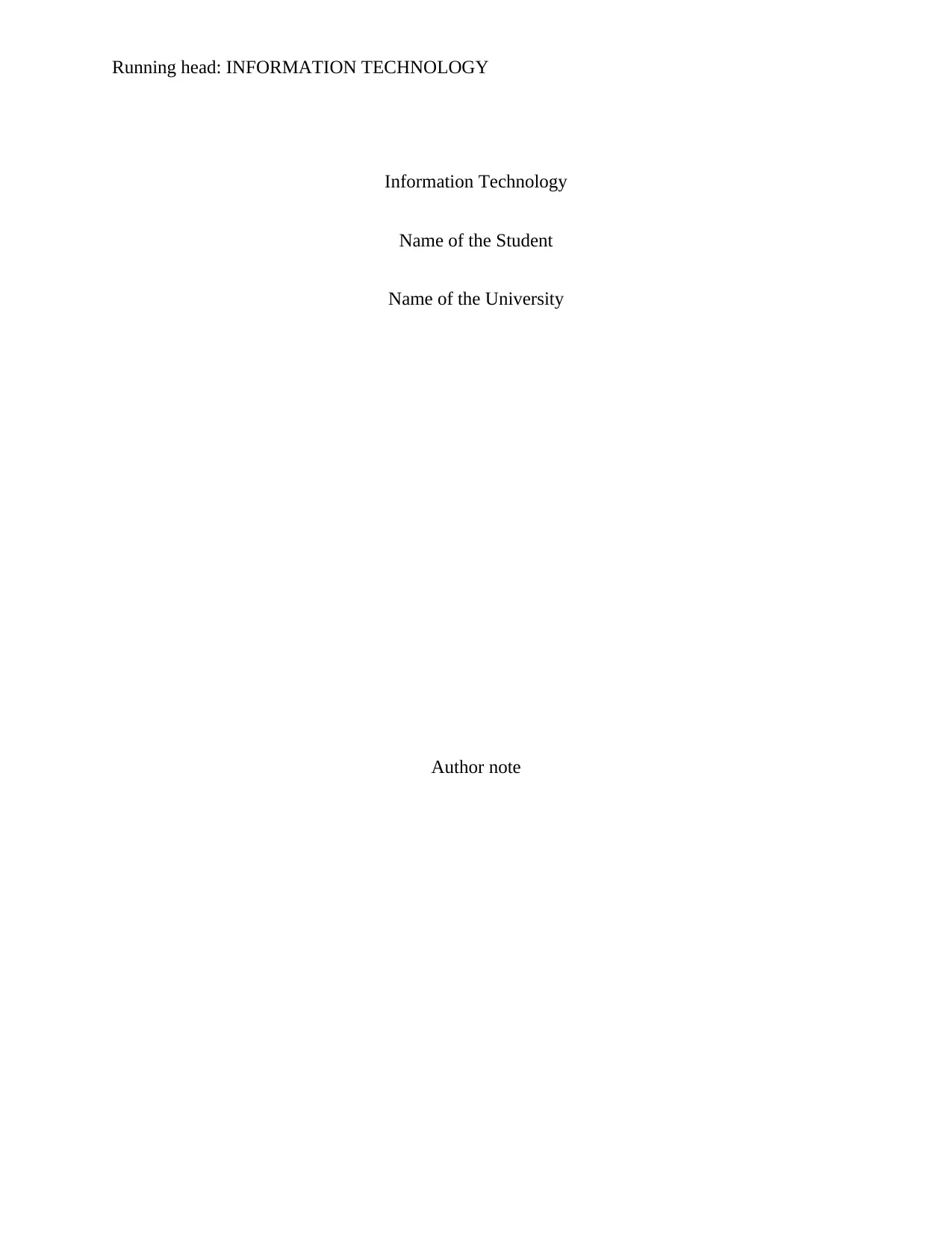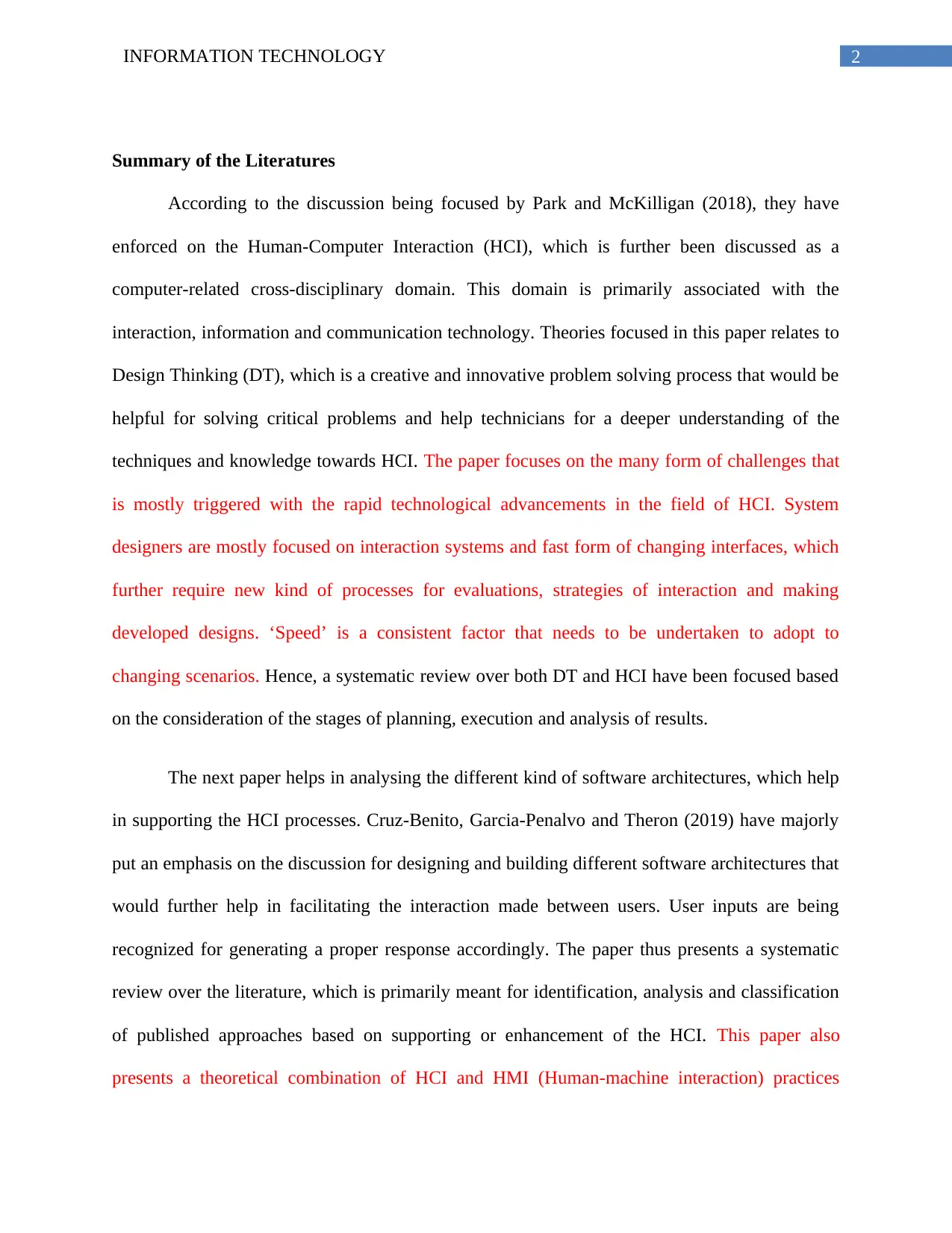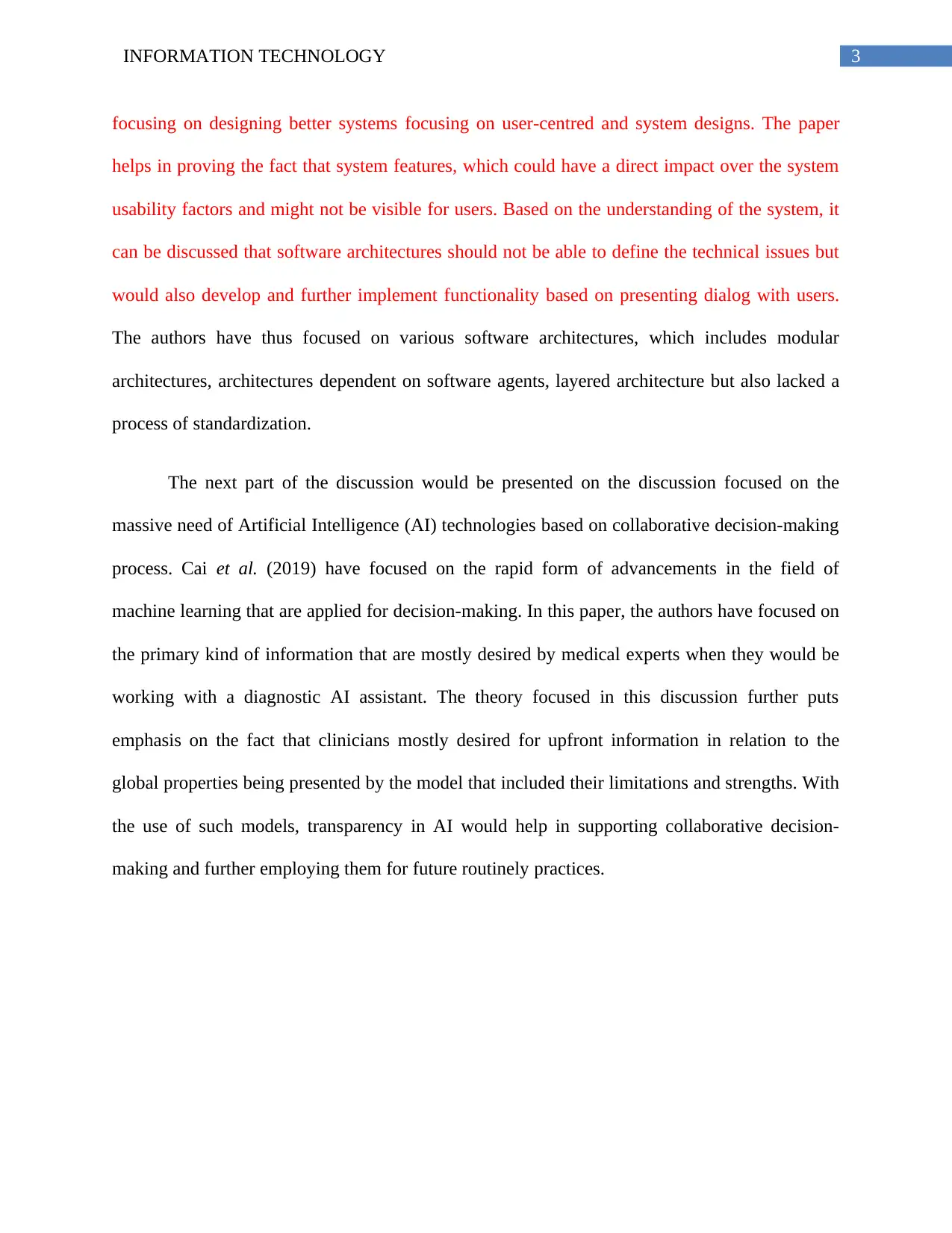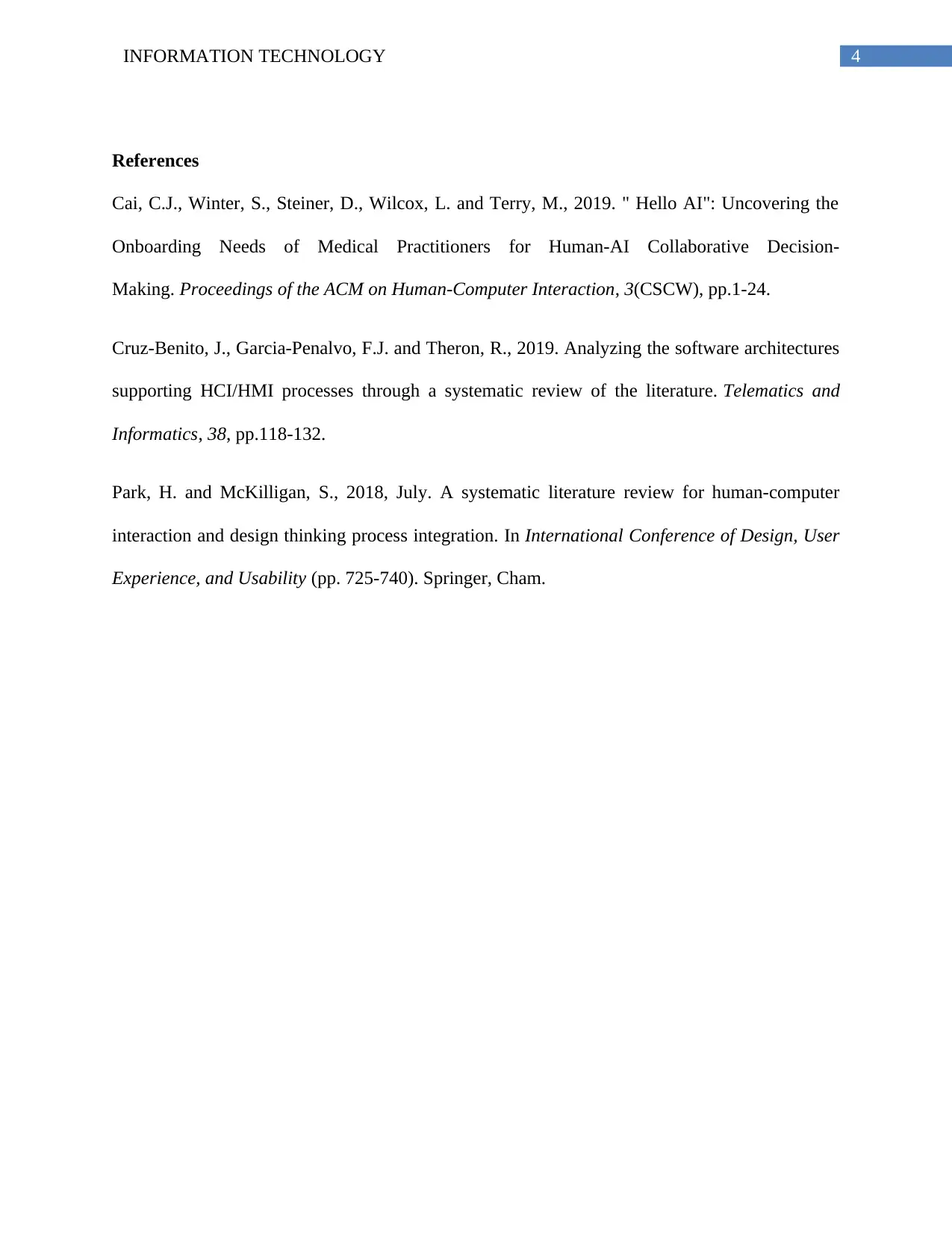University IT Literature Review Report on AI and HCI
VerifiedAdded on 2022/09/26
|5
|753
|15
Report
AI Summary
This report provides a summary of literature on Information Technology, focusing on Human-Computer Interaction (HCI), Artificial Intelligence (AI), and software architectures. The report begins by discussing the integration of Design Thinking (DT) within HCI, highlighting the challenges and the need for new evaluation processes. It then analyzes different software architectures that support HCI, emphasizing user-centered and system designs. The report also examines the application of AI in collaborative decision-making, particularly in the medical field, focusing on the information needs of medical experts when interacting with AI assistants. The literature review includes research papers by Park and McKilligan (2018), Cruz-Benito, Garcia-Penalvo and Theron (2019), and Cai et al. (2019), covering topics such as design thinking, software architectures, and the integration of AI in medical decision-making processes. The report underscores the importance of transparency and understanding the strengths and limitations of AI models for effective collaboration and future applications.
1 out of 5












![[object Object]](/_next/static/media/star-bottom.7253800d.svg)